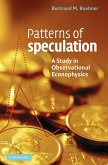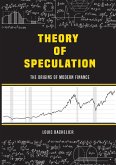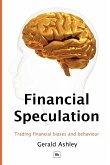An introductory student text giving insights into economics as seen from the perspective of physics.
The main objective of this book is to show that behind the bewildering diversity of historical speculative episodes it is possible to find hidden regularities, thus preparing the way for a unified theory of market speculation. Speculative bubbles require the study of various episodes in order for a comparative perspective to be obtained and the analysis developed in this book follows a few simple but unconventional ideas. Investors are assumed to exhibit the same basic behavior during speculative episodes whether they trade stocks, real estate, or postage stamps. The author demonstrates how some of the basic concepts of dynamical system theory, such as the notions of impulse response, reaction times and frequency analysis, play an instrumental role in describing and predicting speculative behavior. This book will serve as a useful introduction for students of econophysics, and readers with a general interest in economics as seen from the perspective of physics.
Table of content:
Preface; Part I. Econophysics: 1. Why econophysics?; 2. The beginnings of econophysics; Part II. How Do Markets Work?: 3. Social man versus homo economicus; 4. Organization of speculative markets; Part III. Regularities in Speculative Episodes: 5. Collective behavior of investors; 6. Speculative peaks: statistical regularities; Part IV. Theoretical Framework: 7. Two classes of speculative peaks; 8. Dynamics of speculative peaks; 9. Theoretical framework: implications; References; Index.
Hinweis: Dieser Artikel kann nur an eine deutsche Lieferadresse ausgeliefert werden.
The main objective of this book is to show that behind the bewildering diversity of historical speculative episodes it is possible to find hidden regularities, thus preparing the way for a unified theory of market speculation. Speculative bubbles require the study of various episodes in order for a comparative perspective to be obtained and the analysis developed in this book follows a few simple but unconventional ideas. Investors are assumed to exhibit the same basic behavior during speculative episodes whether they trade stocks, real estate, or postage stamps. The author demonstrates how some of the basic concepts of dynamical system theory, such as the notions of impulse response, reaction times and frequency analysis, play an instrumental role in describing and predicting speculative behavior. This book will serve as a useful introduction for students of econophysics, and readers with a general interest in economics as seen from the perspective of physics.
Table of content:
Preface; Part I. Econophysics: 1. Why econophysics?; 2. The beginnings of econophysics; Part II. How Do Markets Work?: 3. Social man versus homo economicus; 4. Organization of speculative markets; Part III. Regularities in Speculative Episodes: 5. Collective behavior of investors; 6. Speculative peaks: statistical regularities; Part IV. Theoretical Framework: 7. Two classes of speculative peaks; 8. Dynamics of speculative peaks; 9. Theoretical framework: implications; References; Index.
Hinweis: Dieser Artikel kann nur an eine deutsche Lieferadresse ausgeliefert werden.








